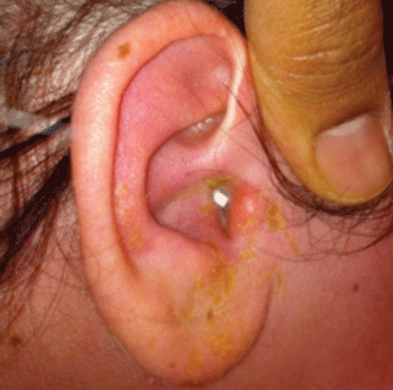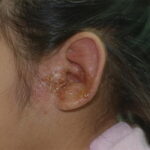Acute otitis externa (AOE), commonly referred to as “swimmer’s ear,” is a prevalent inflammatory condition of the external ear canal, often caused by bacterial infections. Among the pathogens responsible, Pseudomonas aeruginosa stands out as a leading cause, particularly in cases associated with water exposure or trauma to the ear canal. This article delves into the etiology, clinical presentation, diagnostic approaches, and evidence-based treatment strategies for acute Pseudomonas aeruginosa otitis externa, providing a comprehensive resource for healthcare professionals and patients alike.

Etiology and Risk Factors
Pseudomonas aeruginosa is a gram-negative bacterium that thrives in moist environments, making it a common culprit in acute otitis externa, especially in individuals who engage in water activities such as swimming. The bacterium exploits disruptions in the ear canal’s natural defenses, such as microtrauma from scratching, cerumen removal, or prolonged moisture exposure, to establish infection210.
Other predisposing factors include:
- Pre-existing dermatologic conditions like eczema or seborrheic dermatitis.
- Use of hearing aids or earplugs, which can trap moisture.
- Alkaline pH changes in the ear canal, often due to soap or shampoo residue10.
Clinical Presentation
The hallmark symptoms of acute Pseudomonas aeruginosa otitis externa include:
- Severe otalgia (ear pain), exacerbated by movement of the tragus or pinna.
- Otorrhea (ear discharge), often purulent and foul-smelling.
- Erythema and edema of the ear canal, sometimes leading to partial or complete obstruction.
- Itching and tenderness, particularly in the early stages of infection26.
In severe cases, the infection may spread beyond the ear canal, causing cellulitis or even malignant otitis externa, a life-threatening condition requiring urgent intervention15.
Diagnosis
Diagnosis is primarily clinical, based on history and physical examination. Key diagnostic steps include:
- Otoscopy: Visualization of the ear canal to assess inflammation, discharge, and tympanic membrane integrity.
- Tragus and Pinna Manipulation: Pain upon movement is a classic sign of otitis externa.
- Microbial Culture: In refractory or recurrent cases, swabbing the ear canal for culture and sensitivity testing can identify Pseudomonas aeruginosa and guide antibiotic selection512.
Treatment Strategies
Topical Antimicrobial Therapy
Topical antibiotics remain the cornerstone of treatment for uncomplicated acute Pseudomonas aeruginosa otitis externa. Commonly used agents include:
- Fluoroquinolones (e.g., ciprofloxacin): Highly effective against Pseudomonas aeruginosa and well-tolerated.
- Aminoglycosides (e.g., gentamicin): Often combined with corticosteroids to reduce inflammation.
- Acetic Acid Solutions: Useful for mild cases or as adjunctive therapy26.
Systemic Antibiotics
Oral or intravenous antibiotics are reserved for cases with:
- Spread of infection beyond the ear canal (e.g., cellulitis).
- Immunocompromised patients or those with diabetes mellitus.
- Failure of topical therapy1015.
Adjunctive Measures
- Aural Toilet: Cleaning the ear canal to remove debris and enhance topical medication penetration.
- Pain Management: Analgesics such as ibuprofen or acetaminophen to alleviate discomfort26.
Prevention
Preventive strategies focus on minimizing risk factors:
- Ear Hygiene: Avoid inserting objects into the ear canal and dry ears thoroughly after swimming or showering.
- Protective Measures: Use earplugs or custom-fitted swim molds during water activities.
- Acidic Ear Drops: Regular use of acetic acid solutions to maintain an acidic ear environment210.
Acute Pseudomonas aeruginosa otitis externa is a common yet potentially serious condition that requires prompt diagnosis and appropriate management. By understanding its etiology, recognizing its clinical features, and implementing evidence-based treatment strategies, healthcare providers can effectively manage this condition and prevent complications. For patients, adherence to preventive measures is key to reducing the risk of recurrence.

